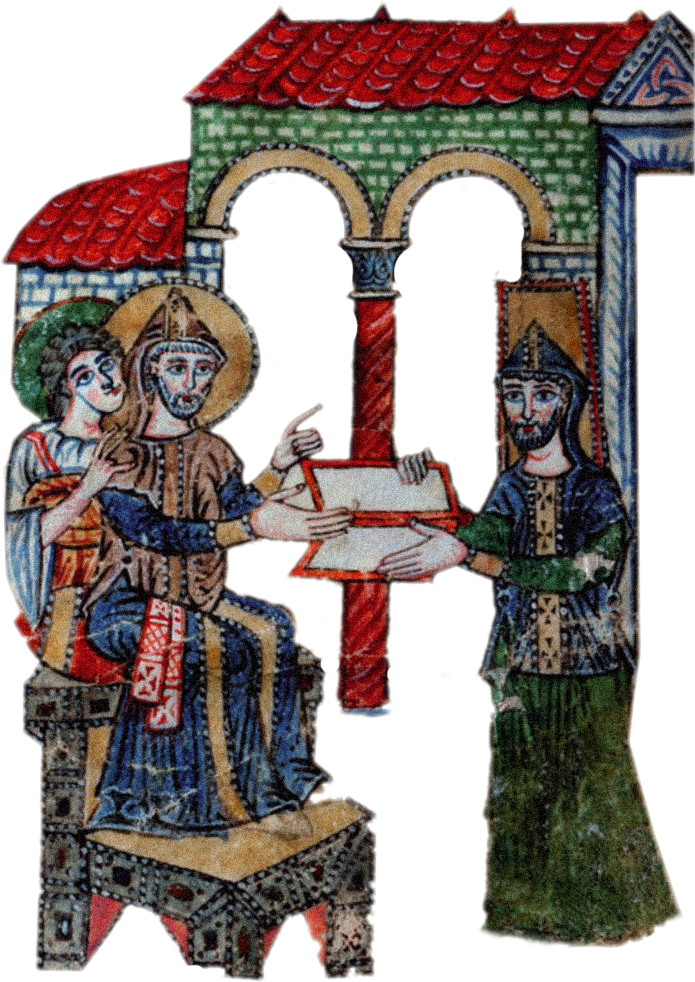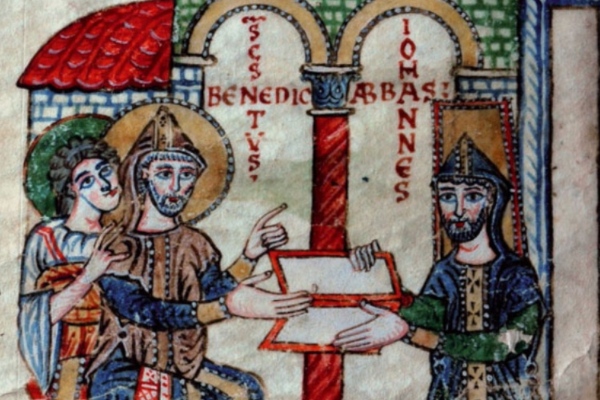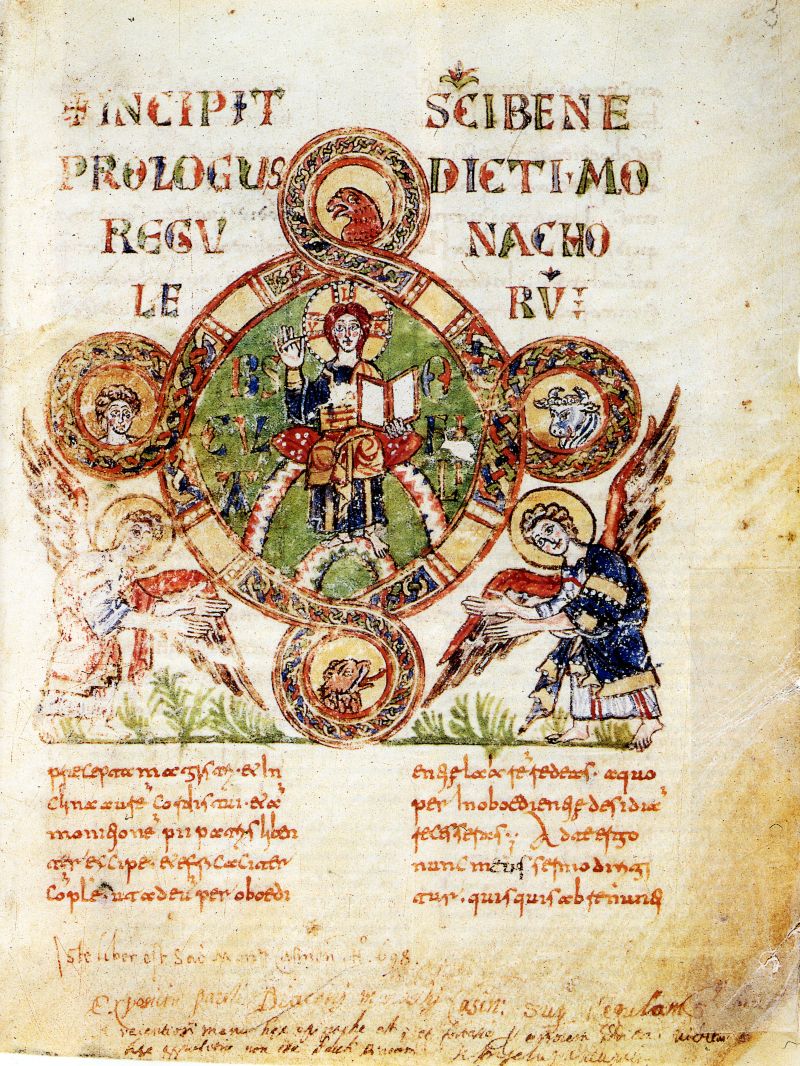The earliest illustrated
manuscript copy
of the ‘Rule’ of St Benedict
The codex Casin. 175 marks two ‘firsts’: it is the earliest known coyp of the commentary on The Rule of St Benedict and the oldest illustrated copy of the Rule itself.


One of the most remarkable manuscripts held in Cassino is Casin. 175, containing the text of the Rule of St Benedict, together with a commentary on it and a series of texts on the history, customs and traditions of the Cassino community. The manuscript is not the earliest surviving copy of the Rule; this is the manuscript Hatton 48, dating from the 7th to 8th centuries and held in the Bodleian Library in Oxford, but this is without illustrations. The Cassino manuscript, however, is both the oldest surviving copy of what was the earliest commentary on the Rule – for long thought to be written by Paolo Diacono – as well as being the first illustrated manuscript of the work.
A BRIEF DESCRIPTION OF THE MANUSCRIPT
Casinense [= Casin.] 175
Title: Comm. in regulam S. Benedicti; Monumenta plura ordinis monastici; Chronica S. Benedicti et alia nonnulla
Contents: miscellaneous codex (text of the Rule of St Benedict, commentary on the Rule, historical texts)
Type: manuscript on parchment
Dating: circa 914-934
Features: 300 x 230; pp. 590; Beneventan script in two columns; rubrication in red, initial capital letters in various colours
Present location: Montecassino, Archivio dell’Abbazia
“The iconic codex of the history of the Cassino community”
This illuminated manuscript in Latin was written in the scriptorium of Capua, where monks from Cassino had fled after Saracen troops destroyed the monastery in Cassino on 4 September 883. The manuscript was composed during the period when John I was abbot (914-934). It offers a valuable insight into the life of the Cassino monastic community, including references to their early customs and liturgical traditions.
The illuminations in Casin. 175
The opening has an image of St Benedict and the abbot John of Capua (p. 2). John, on the right, is shown handing the manuscript of the Rule to the founder of the Order, St Benedict; his head is surrounded by a square nimbus. St Benedict, inspired by an angel – both with haloes – receives the manuscript book and at the same time blesses the volume. This depiction of dedication was also used by later abbots to mark the beginning of a manuscript. On the following leaf (p. 3), in the prologue to the text of the Rule, the illuminator has filled the initial ‘O’ with a depiction of the Maiestas Domini: Christ enthroned surrounded by symbols of the four evangelists.

